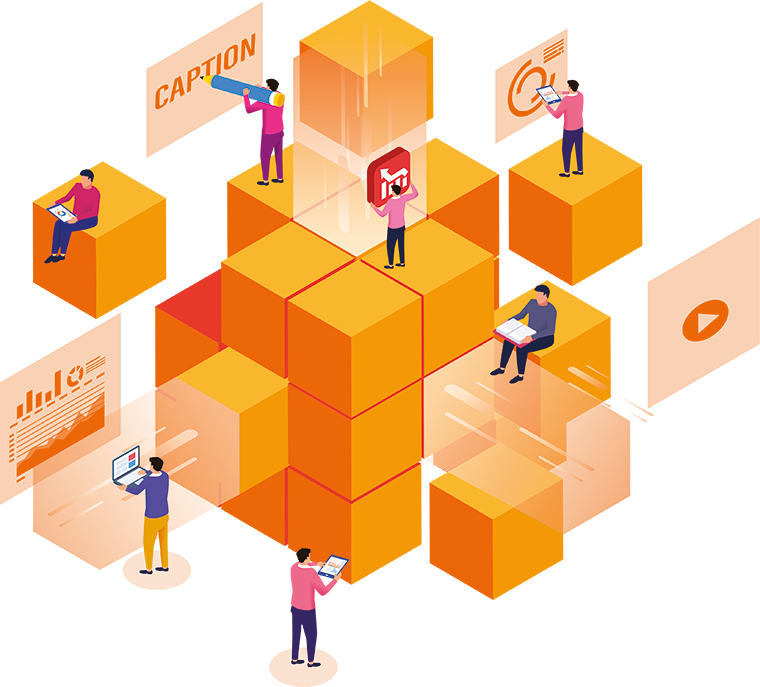AI in broadcast: Destination transformation

The potential for AI to revolutionise broadcasters’ real-time production and use of archive materials is only starting to become clear. Dalet’s new AI solution is delivering new flexibility and efficiency to those workflows
Advertisement Feature
If ever there was a trend that came together with perfect synchronicity for the changing requirements of a given market, it’s artificial intelligence in broadcast. The ability to use AI to automate repetitive but essential tasks – from interviewee captioning to comprehensive searches for relevant archive material – hasn’t failed to resonate with broadcasters who have to serve more platforms with more content than ever before.
Over the last 18 months we have seen the use of AI transition from experimental trials to real-world broadcast deployments. Accordingly, visitors to IBC2019 can expect to see an unprecedented number of AI-based broadcast solutions on show – and among those will be Dalet Media Cortex.
The flagship of the company’s push into AI, the Dalet Media Cortex AI service platform works on the basis that media professionals can be more productive, dedicate more time to create work and collaborate more effectively when they use AI-based tools and workflows. At the other end, audiences can be better served with higher-quality content and richer, personalised multi-platform experiences.
 At a time when broadcasters are closely scrutinising every aspect of the value chain, one of Dalet Media Cortex’s primary selling points is its ability to help automate what Dalet describes as ‘mundane tasks and processes’. Suggested tasks include the routine automation of 80-90% of closed captioning work, the tagging of key scenes, and the collation of highlights for review and curation.
Raoul Cospen, director of business development and news market leader at Dalet, explains that the motivating idea behind the development of Media Cortex was to “make it as easy as possible to incorporate AI into customers’ workflows and connect it fully to their media environments. We also wanted to create a model and a set of tools that would allow broadcasters to effectively manage the data resulting from the AI processes.”
This next generation of augmented media operations is a strategic focus for Dalet, and already generates significant interest from news and sports production teams around the world. The company has deep internal expertise in these topics. Michael Elhadad, co-founder and head of technology at Dalet, is also a university professor and researcher in AI and natural language processing.
Working with recommendations
Cospen highlights several of the key advantages that an AI-based solution like Dalet Media Cortex can bring to news production. “AI can offer a new dimension of functionality by recommending content that can be used to augment or expand a news story,” he says. “So when I am working in my content planning or editing tools I can have easy access to any recommendations of material that might be relevant to a story. It could be existing content from the archives or new material coming in from wire sources or elsewhere. What this effectively means is that you have a live real-time search and it’s always on.”
At a time when broadcasters are closely scrutinising every aspect of the value chain, one of Dalet Media Cortex’s primary selling points is its ability to help automate what Dalet describes as ‘mundane tasks and processes’. Suggested tasks include the routine automation of 80-90% of closed captioning work, the tagging of key scenes, and the collation of highlights for review and curation.
Raoul Cospen, director of business development and news market leader at Dalet, explains that the motivating idea behind the development of Media Cortex was to “make it as easy as possible to incorporate AI into customers’ workflows and connect it fully to their media environments. We also wanted to create a model and a set of tools that would allow broadcasters to effectively manage the data resulting from the AI processes.”
This next generation of augmented media operations is a strategic focus for Dalet, and already generates significant interest from news and sports production teams around the world. The company has deep internal expertise in these topics. Michael Elhadad, co-founder and head of technology at Dalet, is also a university professor and researcher in AI and natural language processing.
Working with recommendations
Cospen highlights several of the key advantages that an AI-based solution like Dalet Media Cortex can bring to news production. “AI can offer a new dimension of functionality by recommending content that can be used to augment or expand a news story,” he says. “So when I am working in my content planning or editing tools I can have easy access to any recommendations of material that might be relevant to a story. It could be existing content from the archives or new material coming in from wire sources or elsewhere. What this effectively means is that you have a live real-time search and it’s always on.”
AI can also transform basic tasks in the news production process. “The automatic generation of captions is an obvious example,” notes Cospen. “No broadcaster wants too much time spent transcribing information, converting it into subtitles and aligning them properly on-screen. If the manual creation of captions for one minute of video takes about six minutes, we estimate Dalet Media Cortex can achieve this in just one minute – six times faster.” In developing its AI solution, Dalet proceeded with an awareness that the AI market is “evolving rapidly” at the moment and that customers would inevitably be seeking a learning curve that was not too demanding of their time and energy. “We really want our customers to enjoy the experience of AI, and to be able to start making the most of it in a short period of time. And that’s what we believe we have achieved with Dalet Media Cortex.” Designs for AI development Cospen believes that there are two primary models through which broadcasters will seek to utilise AI during the next few years. The first is what he terms “the classic type of project in which people would like to utilise their archives more effectively and index material that is poorly documented. For instance, in news there will be a desire to use AI to extract and tag faces, and also produce transcriptions of content.” The second model will involve the creation by vendors and specialists of “customised and broadcaster-specific deployments.” As a provider of AI solutions Dalet is currently evaluating the extent to which they will work on these deployments, but with Dalet Media Cortex it is evident that they already have a framework that can provide a basis for such projects. In addition to the continued promotion of its flagship solution, Dalet is presently working on a white paper to guide broadcasters through the early stages of planning an AI project. “We definitely think there is a role for us in broadening the general understanding of AI as well as the various factors that need to be accommodated during the initial planning phases,” says Cospen. There is no doubt that the speed and extent of AI adoption will continue to vary significantly between broadcasters for the foreseeable future. But the overall direction of travel is clear and even the more reticent of end-users are now thinking about AI. “It’s already in the process of becoming a key requirement,” believes Cospen. “We speak to more and more broadcasters who want to introduce at least some degree of AI into their production workflows. As people become more comfortable with increased automation, and familiar with its benefits, then we will surely see deployments that are more extensive and which involve the automation of more mundane tasks. Ultimately, it won’t be too long before we can’t live without AI.”Ultimately, it won’t be too long before we can’t live without AI
 ]]>
]]>











